The subjunctive is a grammatical mood, a feature of an utterance that indicates the speaker's attitude toward it. Subjunctive forms of verbs are typically used to express various states of unreality such as wish, emotion, possibility, judgment, opinion, obligation, or action that has not yet occurred; the precise situations in which they are used vary from language to language. The subjunctive is one of the irrealis moods, which refer to what is not necessarily real. It is often contrasted with the indicative, a realis mood which principally indicates that something is a statement of fact.

Elisa María Avelina "Lilita" Carrió is an Argentine lawyer, professor, and politician. She is the leader of Civic Coalition ARI, one of the founders of Cambiemos, and was National Deputy for Chaco Province and Buenos Aires. Carrió is considered a liberal, Christian, and heterodox politician in Argentina.
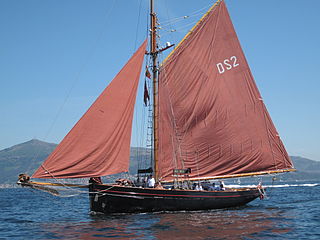
Jolie Brise is a gaff-rigged pilot cutter built and launched by the Albert Paumelle Yard in Le Havre in 1913 to a design by Alexandre Pâris. After a short career as a pilot boat, owing to steam replacing sail, she became a fishing boat, a racing yacht and a sail training vessel.
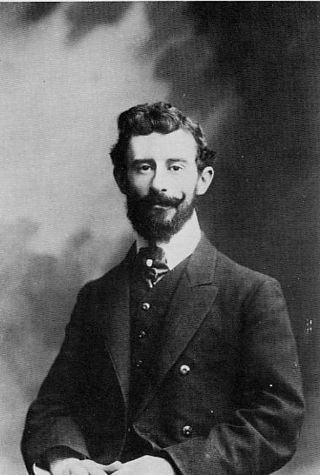
Miroirs is a five-movement suite for solo piano written by French composer Maurice Ravel between 1904 and 1905. First performed by Ricardo Viñes in 1906, Miroirs contains five movements, each dedicated to a fellow member of the French avant-garde artist group Les Apaches.
In Egyptian mythology, the hennu boat or Sokar barque was a symbol of the god Seker of Memphis. Depending on the era or the prevailing dynasty of Egypt, the hennu boat sailed toward either dawn or dusk.

The Royal Palace of Cambodia is a complex of buildings which serves as the official royal residence of the King of Cambodia. Its full name in Khmer is the Preah Barom Reacheaveang Chaktomuk Serey Mongkol. The Cambodian monarchs have occupied it since it was built in the 1860s, with a period of absence when the country came into turmoil during and after the reign of the Khmer Rouge.
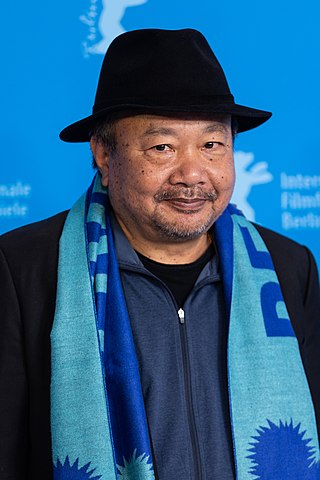
Rithy Panh is a Cambodian documentary film director, author and screenwriter.
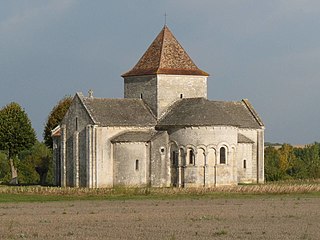
Lichères is a commune in the Charente department in southwestern France. It straddles the river Charente comprising the villages of Lichéres, La Salle and Puychenin. The village of Lichéres is home to a 12th-century catholic church dedicated to Saint Denis. Although there is a conventional road bridge across the river Charente near La Salle there is also a very small ferry called a Barque. The Barque is guided by a steel wire with which users propel the boat.
Korean Uruguayans, numbering 130 individuals, formed the 19th-largest Korean community in Latin America as of 2005, according to the statistics of South Korea's Ministry of Foreign Affairs and Trade.
Wapstan is the name of the main musical project of Canadian noise musician Martin Sasseville based in Montreal, Quebec. Originally formed in Saguenay as a project to create experimental sounds influenced by the experience of coldness, Wapstan based most of his sounds as a tribute of the north. The Wapstan sound is often self-described as "hypothermic drones". Wapstan's sound was originally constructed as a vitalist ambiance opposed to the general pessimism of the noise scene. Since its moving to Montreal in 2003, Wapstan started performing live and has performed many shows in Montreal as well as New England and central Canada.
Bopha Pos Vek is a Cambodian film. It is a sequel to the film Entry Komar. The film stars Tep Rindaro as Reahu, Pisith Pilika as Chetra Tevy, Yutthara Chanee as Entry Komar, Sok Sreymom as Angelikesor, and Buncheurn Soriyan as Chendamony. The film was distributed in VHS by Preah Vihear Production and on DVD by Klang Moueng Video.
Knhom Jea Neakna is a Cambodian television film that aired on Cambodian Television Network on April 1, 2009.
Parque Familiar Julio Enrique Monagas is Puerto Rico's largest passive park. It is located in barrio Bucaná, Ponce, Puerto Rico, on the banks of the Bucaná and Portugués rivers. The park was named after Julio Enrique Monagas, "the father of Puerto Rican Olympic sports". In November 2017, the park was severely damaged by Hurricane Maria and, as of today, remains closed.
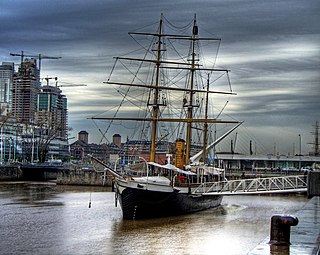
The corbeta (corvette) ARA Uruguay, built in England, is the largest ship afloat of its age in the Armada de la República Argentina, with more than 140 years passed since its commissioning in September 1874. The last of the legendary squadron of President Sarmiento, the Uruguay took part in revolutions, ransoms, expeditions, rescues, and was even floating headquarters of the Navy School. During its operational history 1874–1926 the Uruguay has served as a gunboat, school ship, expedition support ship, Antarctic rescue ship, fisheries base supply ship, and hydrographic survey vessel, and is now a museum ship in Buenos Aires. The ship was built in 1874 at Laird Bros. shipyard of Birkenhead, England, at a cost of £32,000. This ship is rigged to a barque sailplan. The ship's steel hull is sheathed in teak.
BVB is a private company conglomerate based in Phnom Penh, Cambodia.

Boating on the River Epte is an 1890 oil painting by French impressionist artist Claude Monet. It is currently housed at the São Paulo Museum of Art.
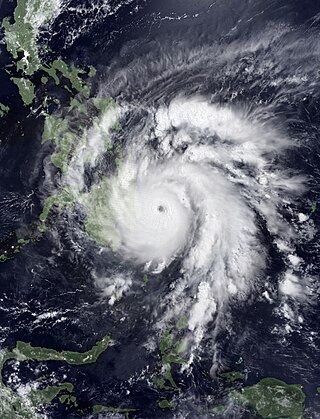
Typhoon Bopha, known in the Philippines as Super Typhoon Pablo, was the strongest tropical cyclone on record to ever affect the Philippine island of Mindanao, making landfall as a Category 5 super typhoon with winds of 175 mph (282 km/h). The twenty-fourth tropical storm, along with being the fourth and final super typhoon of the 2012 Pacific typhoon season, Bopha originated unusually close to the equator, becoming the second-most southerly Category 5 super typhoon, reaching a minimum latitude of 7.4°N on December 3, 2012, as only Typhoon Louise of 1964 came closer to the equator at this strength, at 7.3°N. After first making landfall in Palau, where it destroyed houses, disrupted communications and caused power outages, flooding and uprooted trees, Bopha made landfall late on December 3 in Mindanao. The storm caused widespread destruction on Mindanao, leaving thousands of people homeless and killing 1,901 people.

The House of Norodom is the ruling royal house of Cambodia. Its members are direct descendants of King Norodom (1860–1904), a son of the "Great-King", Ang Duong. The current head of the House of Norodom is the current king of Cambodia, Norodom Sihamoni. Norodom is one of only two royal houses of Cambodia. Its counterpart, the House of Sisowath, is named after another son of Ang Duong, Sisowath. Four members have served as Kings of Cambodia, and three as Prime Ministers led by the Cambodian People's Party (CPP) that ruled Cambodia as an authoritarian single-party state after it won all 125 seats in cities, towns and provinces throughout the country in the election campaign since 2018.
Vente Venezuela is a political movement in Venezuela headquartered in the city of Caracas. It has parliamentary representation in the National Assembly. Its registration as a political party has not been granted by the National Electoral Council.
RSN Stadium is a football stadium in Phnom Penh, Cambodia, and the home of Cambodian League club Phnom Penh Crown. The all-seater Smart RSN Stadium is named after the club owner, Rithy Samnang. The stadium was opened with the RSN Youth Cup in June 2015 with a 4-team international tournament including Malaysia's Frenz United and Chonburi and Muangthong United from Thailand. All proceeds from the tournament were given to the Kantha Bopha Children's Hospital. The stadium hosted 2023 SEA Games Women's football events.









